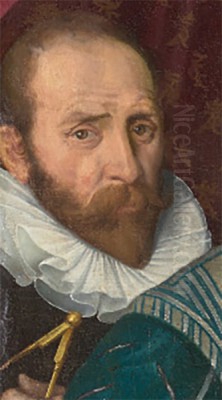
Frans Pourbus the Younger (1569–1622) stands as a significant figure in the transition from the late Renaissance to the Baroque period in Northern European art. A Flemish painter hailing from a distinguished artistic dynasty in Antwerp, he became one of the most sought-after court portraitists of his era, serving powerful patrons in Brussels, Mantua, and Paris. Known for his meticulous detail, refined technique, and ability to capture the status and psychology of his sitters, Pourbus the Younger navigated the complex artistic and political landscapes of early 17th-century Europe, leaving behind a legacy of compelling portraits that document the elite of his time. His work forms a crucial link between the established traditions of Flemish realism and the burgeoning international Baroque style, influencing the course of portraiture, particularly in France.
An Artistic Dynasty: The Pourbus Family
Frans Pourbus the Younger was born into a family deeply embedded in the artistic fabric of Flanders. His grandfather, Pieter Pourbus (c. 1523–1584), was a leading painter, sculptor, draftsman, and cartographer based primarily in Bruges. Pieter was renowned for his religious compositions, allegorical scenes, and insightful portraits, executed in a style that blended local traditions with Italian Renaissance influences. He played a vital role in the cultural life of Bruges, receiving numerous commissions from civic authorities and wealthy merchants. His meticulous approach and clear, objective style laid a foundation for the family's artistic identity.
Frans Pourbus the Elder (c. 1545–1581), Pieter's son and Frans the Younger's father, continued the family tradition, establishing himself as a prominent painter in Antwerp. He specialized in portraiture and religious subjects, gaining recognition for works like the Hoefnagel Family Portrait and various altarpieces. Frans the Elder further developed the realistic portrayal characteristic of Flemish art, often imbuing his subjects with a quiet dignity. Tragically, his promising career was cut short when he died relatively young, possibly from typhoid fever, when Frans the Younger was only about twelve years old. This familial background provided Frans the Younger with an invaluable artistic inheritance and early exposure to the techniques and demands of the profession.
Early Life and Training in Antwerp
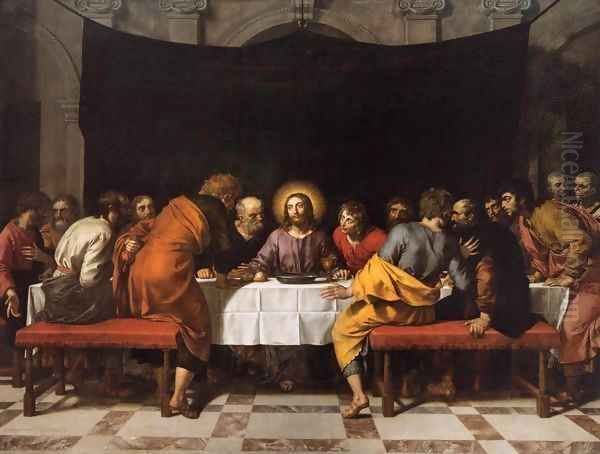
Born in Antwerp in 1569, Frans Pourbus the Younger's early life was shaped by his family's artistic prominence and the untimely death of his father. Following his father's passing in 1581, it is likely that his initial artistic guidance came from his grandfather, Pieter, in Bruges. However, he eventually returned to Antwerp, the bustling commercial and artistic hub of the Southern Netherlands. Antwerp, despite the political and religious turmoil of the Dutch Revolt, remained a center for artistic innovation and production, home to the influential Guild of Saint Luke, the professional organization for painters and other craftsmen.
Pourbus completed his apprenticeship, although the specific master under whom he formally trained after his father's death is not definitively documented. By 1591, Frans Pourbus the Younger achieved a significant milestone: he was registered as a free master in the Antwerp Guild of Saint Luke. This status allowed him to establish his own workshop, take on apprentices, and accept commissions independently. His early work from this period likely continued the realistic portrait tradition established by his father and grandfather, focusing on precise rendering of features and textures, a hallmark he would retain throughout his career. The Antwerp artistic scene at this time also included prominent figures like Otto van Veen, who would later become Peter Paul Rubens' teacher.
Early Career in Brussels
Shortly after becoming a master in Antwerp, Pourbus sought opportunities beyond his native city. He moved to Brussels, the seat of the governors of the Spanish Netherlands, Archduke Albert VII of Austria and his wife, Isabella Clara Eugenia. Working for the court in Brussels represented a significant step up in prestige and provided access to high-profile commissions. While details of his specific activities during this period are less documented than his later career, it is clear that he began to establish his reputation as a skilled portraitist capable of meeting the demands of aristocratic patrons.
His work for Albert and Isabella likely involved creating official portraits intended to project the authority and piety of the rulers. These portraits would have adhered to the conventions of courtly representation, emphasizing status through formal poses, elaborate costumes, and symbolic attributes. This experience in Brussels was crucial in honing his skills in court portraiture and navigating the protocols of serving elite clientele, preparing him for the major international appointments that would follow. His style during this phase probably remained rooted in the precise, detailed realism of the Flemish school, capturing likenesses with accuracy while beginning to develop the sense of formal dignity required for royal portraiture.
The Mantuan Years: Service to the Gonzaga
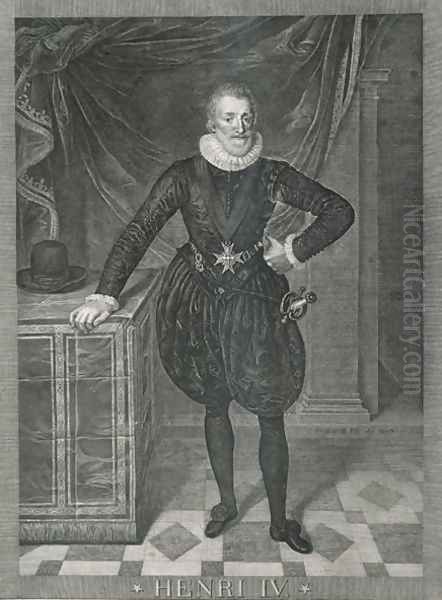
A pivotal moment in Frans Pourbus the Younger's career arrived in 1600 when he was summoned to Italy to serve as court painter to Vincenzo I Gonzaga, the Duke of Mantua. The Gonzaga court was one of the most brilliant and culturally sophisticated in Europe, renowned for its patronage of arts and music, attracting talents like Claudio Monteverdi. For Pourbus, this appointment was not only a prestigious honor but also an opportunity to immerse himself in the heartland of the Italian Renaissance and contemporary Italian art.
In Mantua, Pourbus succeeded the Flemish painter Jean Bahuet. He quickly became the principal portraitist for the ducal family, capturing likenesses of Duke Vincenzo, his wife Eleonora de' Medici (sister of Marie de' Medici, who would later become his patron in France), and their children. His portraits from this period, such as those of the Duke and Duchess, showcase his mature style: a combination of Flemish meticulousness in rendering details like lace, jewels, and fabrics, with an Italianate sense of elegance, richer color palettes potentially influenced by Venetian masters like Titian and Tintoretto, whose works were likely visible in the Gonzaga collections.
During his time in Mantua (1600-1609), Pourbus encountered another Flemish artist who would achieve even greater international fame: Peter Paul Rubens. Rubens arrived at the Gonzaga court shortly after Pourbus, in 1600, initially in a more junior capacity but quickly rising. While the exact nature of their relationship is debated – whether collaborative, competitive, or simply collegial – they were certainly aware of each other's work. Pourbus's established position and refined, detailed style contrasted with Rubens's burgeoning dynamic Baroque energy. This period was immensely formative for Pourbus, exposing him to Italian artistic currents and solidifying his reputation on an international stage.
Parisian Climax: Painter to the Queen Regent
In 1609, Frans Pourbus the Younger received another prestigious invitation, this time from Marie de' Medici, Queen of France and wife of King Henry IV (and sister of his Mantuan patroness, Eleonora de' Medici). He moved to Paris and became the official court painter to the Queen. This appointment marked the final and perhaps most prominent phase of his career. Following Henry IV's assassination in 1610, Marie de' Medici became Queen Regent for her young son, Louis XIII, making Pourbus the painter of the most powerful figure in France.
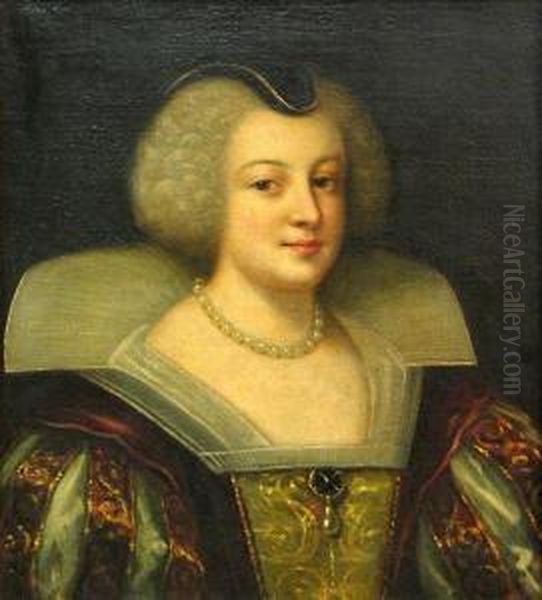
In Paris, Pourbus continued to specialize in state portraiture, creating iconic images of the French royal family. His famous portraits of Marie de' Medici depict her in regal splendor, adorned with elaborate gowns and jewels, embodying the majesty and authority of her position. He also painted portraits of Henry IV (possibly completed posthumously or based on existing likenesses) and the young Louis XIII. These works are characterized by their formal composition, meticulous attention to costume and insignia of rank, and a certain psychological reserve, conveying dignity and status above all. He likely maintained a workshop to assist with the demands of court commissions.
Pourbus remained in Paris, serving Marie de' Medici until his death in 1622. His presence was significant for French art, as he brought a highly refined Flemish-Italianate style of portraiture to the French court before the rise of native French Baroque painters or the later dominance of artists like Philippe de Champaigne, who arrived in Paris around the time Pourbus died, and Simon Vouet, who returned from Italy a few years later. Pourbus's detailed, formal style set a standard for royal portraiture in France during the early 17th century. He died in Paris and was buried in the church of Saint-Germain-l'Auxerrois.
Artistic Style and Technique
Frans Pourbus the Younger's artistic style is a fascinating synthesis of Northern European realism and Italian influences, adapted to the specific requirements of court portraiture. His foundation lay firmly in the Flemish tradition inherited from his grandfather Pieter and father Frans the Elder. This is evident in his unwavering commitment to meticulous detail, the precise rendering of textures – silk, velvet, lace, fur, metal, and jewels – and the careful modeling of facial features to achieve a strong likeness. His technique often involved smooth surfaces and fine brushwork, creating an almost enamel-like finish, particularly in the depiction of fabrics and adornments.
His extended stay in Italy, particularly at the Mantuan court, introduced significant developments. He absorbed aspects of Italian High Renaissance and Mannerist painting. His color palette often became richer and warmer, possibly influenced by Venetian painters like Titian, Veronese, and Tintoretto. His compositions sometimes adopted a greater sense of elegance and formality, and figures might display more sophisticated, albeit often stiff, poses characteristic of courtly decorum. While he rarely embraced the dramatic movement or intense emotion of the burgeoning Baroque style exemplified by contemporaries like Caravaggio or the later Rubens, his work gained a grandeur and sophistication beyond his earlier Flemish output.
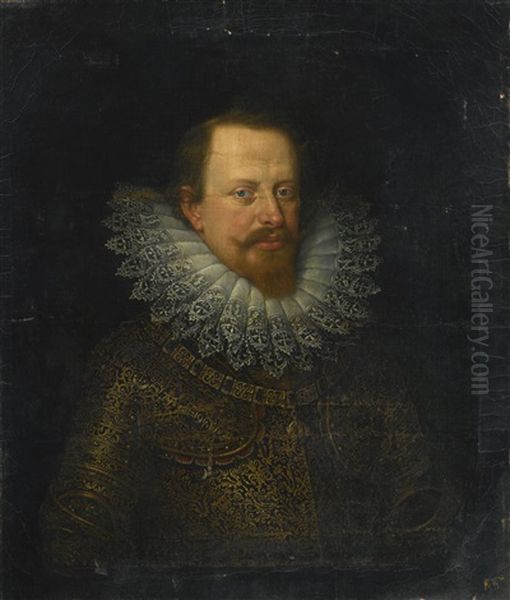
Pourbus excelled in conveying the status and social standing of his sitters. His portraits are often characterized by a formal, somewhat distant presentation. Figures are typically shown bust-length, three-quarter length, or full-length, often against neutral or simple architectural backgrounds, focusing attention entirely on the subject. While psychological depth might not be as overt as in the works of Rembrandt or Velázquez, Pourbus subtly captured nuances of personality and presence within the constraints of official representation. His ability to render the sheer materiality of power – the weight of brocade, the glint of gold thread, the sparkle of gems – was unparalleled and perfectly suited the demands of his royal and aristocratic patrons.
Masterpieces and Major Works
Throughout his prolific career, Frans Pourbus the Younger created numerous portraits that have become important historical and artistic documents. Among his most celebrated works are:
Portrait of Henry IV of France: Pourbus painted several portraits of the French king. These images, often depicting Henry in armor or ceremonial attire, project an image of martial strength and royal authority. The meticulous rendering of the armor, the detailed features of the aging king, and the formal pose are characteristic of Pourbus's approach to male royal portraiture. One notable version is housed in the Louvre Museum.
Portrait of Marie de' Medici: As her official painter, Pourbus created defining images of the Queen Regent. These portraits, such as the full-length depiction also in the Louvre, show her in magnificent gowns, laden with pearls and jewels, often set against rich drapery. They emphasize her status, wealth, and power during the Regency. The detail in the costume is extraordinary, serving as a visual inventory of royal fashion and splendor.
Portrait of Vincenzo Gonzaga, Duke of Mantua: Painted during his Italian period, this work captures the likeness of his patron with characteristic precision. It showcases Pourbus's ability to convey both individual features and the aura of command associated with a powerful Renaissance ruler. The rich attire and direct gaze contribute to the portrait's impact.
Portrait of Margherita Gonzaga, Duchess of Lorraine: This elegant portrait exemplifies his skill in depicting female aristocracy. The elaborate lace collar, the intricate jewelry, and the luxurious fabric of the dress are rendered with painstaking detail, while the Duchess's expression conveys a sense of composed dignity.
Portrait of Empress Eleonora of Austria (as Duchess of Mantua): Painted around 1603-1604, this portrait of Vincenzo Gonzaga's wife (and Marie de' Medici's sister) is noted for its beauty and detailed execution, capturing the richness of her attire and her serene, noble bearing.
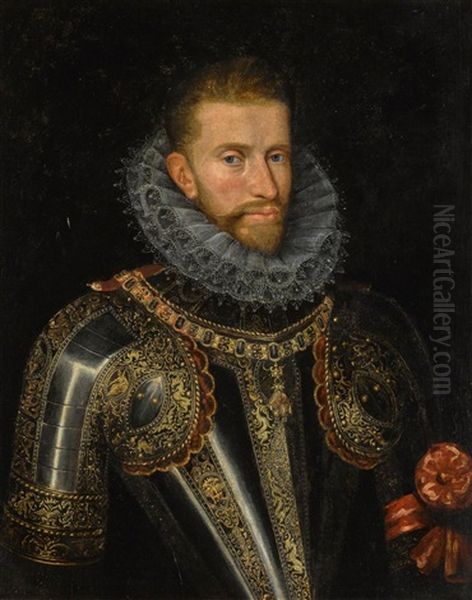
The Last Supper: While primarily known for portraits, Pourbus also undertook religious commissions. A notable example is The Last Supper (Louvre, Paris), painted in 1618 for Marie de' Medici for the church of Saint-Leu-Saint-Gilles in Paris. This large-scale work demonstrates his ability to handle complex multi-figure compositions, though still marked by a certain formality and detailed realism rather than high Baroque drama.
These works, among many others housed in major collections like the Prado Museum (Madrid), the Metropolitan Museum of Art (New York), the Uffizi Gallery (Florence), and the Kunsthistorisches Museum (Vienna), solidify Pourbus's reputation as a master of courtly representation.
Contemporaries and Artistic Milieu
Frans Pourbus the Younger operated within a rich and dynamic European artistic landscape, interacting with, influenced by, and occasionally competing with numerous other significant artists. His career spanned a period of major stylistic transition.
In Flanders, his most prominent contemporary was Peter Paul Rubens (1577–1640). Their paths crossed directly in Mantua. While Pourbus represented the established, detailed tradition, Rubens was forging a new, dynamic Baroque style that would soon dominate European painting. Anthony van Dyck (1599–1641), Rubens's most brilliant pupil, would later build upon the traditions of Flemish portraiture, including the formal elegance seen in Pourbus's work, developing a highly influential, more fluid style of aristocratic portraiture. Other Flemish contemporaries included figure and genre painters like Jacob Jordaens (1593–1678), the flower painter Jan Brueghel the Elder (1568–1625), and portraitists like Cornelis de Vos (1584–1651). Pourbus also collaborated with artists like Crispijn van den Broeck on projects earlier in his career.
During his time in Italy, Pourbus was exposed to the legacy of High Renaissance masters, particularly the Venetians Titian (c. 1488/90–1576), Tintoretto (1518–1594), and Paolo Veronese (1528–1588), whose use of color and grand compositions likely influenced him. He was also working during the time of Caravaggio (1571–1610), whose revolutionary realism and dramatic chiaroscuro were transforming Italian painting, though Pourbus's style remained distinct from Caravaggio's more visceral approach.
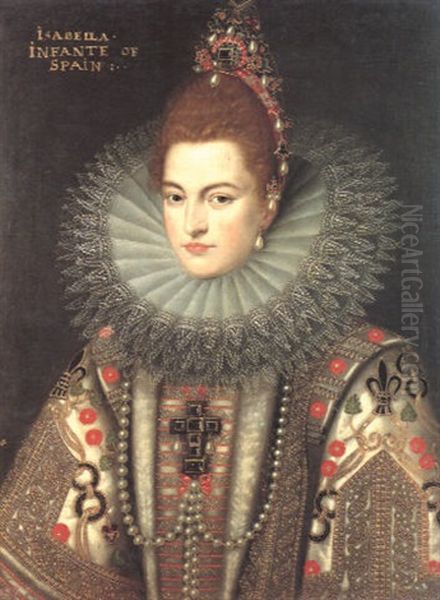
In Paris, Pourbus became a leading figure in court portraiture. He predated the full impact of Philippe de Champaigne (1602–1674), another Flemish-born painter who would become a dominant force in French portraiture with his austere Jansenist-influenced realism, and Simon Vouet (1590–1649), who brought a vibrant Italian Baroque style back to France in 1627. Pourbus's work provided a bridge between the earlier French portrait traditions (like those of the Clouet family) and the later developments of the Grand Siècle. Meanwhile, in the nearby Dutch Republic, artists like Frans Hals (c. 1582–1666) and Rembrandt van Rijn (1606–1669) were developing a distinct, often less formal and more psychologically penetrating style of portraiture.
Personal Life and Character
Details about Frans Pourbus the Younger's personal life are relatively scarce compared to the documentation of his career. One striking aspect, mentioned in some sources though requiring careful verification, concerns his health. It is suggested he suffered from significant health problems from a young age, possibly including tuberculosis and a spinal deformity, which may have resulted in a diminutive stature. If true, his highly successful international career, requiring travel and the physical demands of painting (often large canvases), would be even more remarkable, testifying to considerable resilience and determination.
Unlike many artists of his time, Pourbus apparently never married and is not known to have had children. Some accounts mention correspondence with women, but these relationships remain obscure. His life seems to have been largely dedicated to his art and the service of his patrons.
His family background was Protestant. The Pourbus family, like many others in Antwerp, faced the religious conflicts of the period. Some sources suggest the wider family relocated to the Rhineland around 1615 due to persecution. However, Frans the Younger spent the most significant parts of his career working for staunchly Catholic patrons: the Archdukes in Brussels, the Gonzaga in Mantua, and the French monarchy. This suggests either a personal conversion, a pragmatic separation of personal belief from professional life, or that his particular branch of the family did not face the same pressures. His own religious convictions are not explicitly recorded in his work or known documents.
Legacy and Art Historical Significance
Frans Pourbus the Younger occupies a crucial, if sometimes underestimated, position in European art history. He was a master of the court portrait, skillfully adapting his inherited Flemish realism to the demands of international aristocratic patronage. His meticulous technique, his ability to render the opulence of courtly attire, and his capacity for creating images of formal dignity made him highly sought after by some of the most powerful figures of his day.
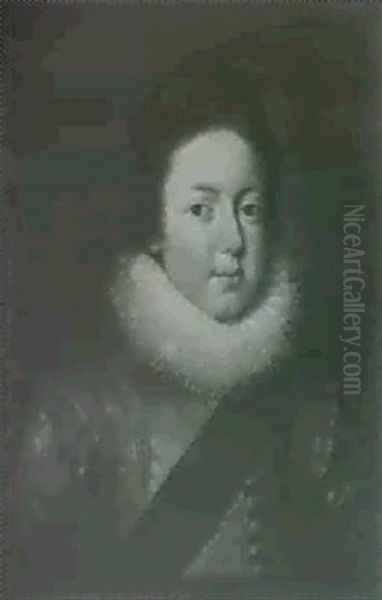
His primary significance lies in his role as a transitional figure. He bridged the gap between the late Renaissance portraiture traditions of Northern Europe and the emerging Baroque style. While he did not embrace the full dynamism of Rubens or the psychological intensity of Rembrandt, his work introduced a level of refinement, coloristic richness (absorbed from Italy), and formal grandeur that influenced the development of official portraiture, particularly in France. He set a standard for royal representation at the French court before the arrival of artists like Philippe de Champaigne.
His influence extended through his numerous portraits, which were widely disseminated and served as models for depicting royalty and aristocracy. His detailed style also provides invaluable historical documentation of the fashion, regalia, and personalities of the European elite in the early 17th century. Though perhaps overshadowed in art historical narratives by the revolutionary genius of Rubens or the profound depth of Rembrandt, Frans Pourbus the Younger remains a key artist of his generation. His works, preserved in major museums worldwide, continue to impress viewers with their technical brilliance and their compelling portrayal of an era of splendor and power. He successfully carried his family's artistic legacy onto the grand stage of European courts, securing his place as a distinguished master of portraiture.